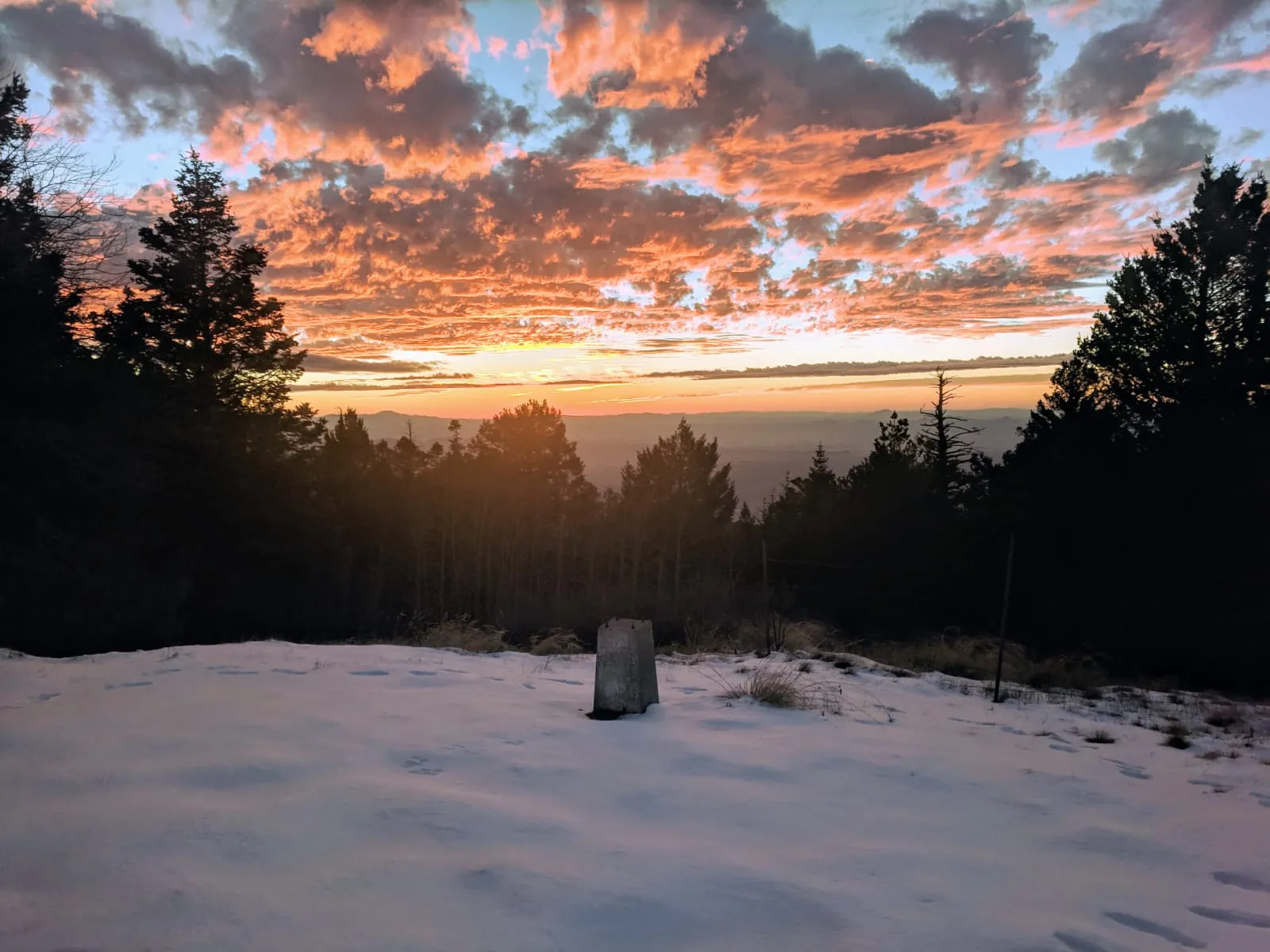Winter Weather in Southern Arizona
Rising from the Sonoran Desert high above Tucson, Mt. Lemmon, the summit of the Catalina Mountains is home to the SkyCenter. While the Tucson valley enjoys balmy winters with daytime temperatures the mid to high 60s, Mt. Lemmon at an elevation of 9170ft, sees daytime temperatures in the low 40s that quickly drop to freezing and below after the sun sets. Mt. Lemmon is the watershed for the Tucson basin and historically receives an average of 180 inches of precipitation annually. December through March are our heavy snow season, and we had a storm at the end of November where we received about a foot of snow!
When it snows, the Mt. Lemmon SkyCenter staff and Steward Observatory Mountain Operations team work together to determine if the site will be ready for a SkyNights program later that evening. These decisions are made based on site-wide road conditions, access to buildings, functionality of domes and equipment, and the safety of staff and guests. Additionally, if the Catalina Highway is potentially unsafe after dark (for example ice or fog) or if Pima County has closed Catalina Highway, we cannot host a program.
Keep in mind that sometimes the highway is closed throughout the day and a decision is made to open it mid-afternoon, after we have had to let our guests know a program is cancelled. It takes coordination and work to open our observatory for research and outreach programming following storms, and we appreciate everyone’s patience while we arrange for a great night. If we get the all clear, we let our guests with reservations for the night know via email and will pick up everyone at Ski Valley. We shuttle up to our site in snow-chain equipped vans.
Clear winter nights are particularly gorgeous from the Mt. Lemmon SkyCenter, and it is extremely COLD. While you depart the warm desert, you are arriving at over 9000 feet above sea level, in what is essentially an alpine forest. Pack accordingly! We suggest multiple layers, and recommend blankets, parkas, gloves, heavy socks earmuffs, etc. to ensure your comfort. Wearing thick hats, gloves and socks will help you stay warm in freezing temperatures.
If you’re looking to visit us during the winter months (November through March), consider having a few open dates in case the weather is uncooperative for stargazing so we can reschedule. One thing we cannot control is the weather, and it can be erratic during this time of the year. When we can run a program, we do guarantee fun and bringing the best program we can to the public!


